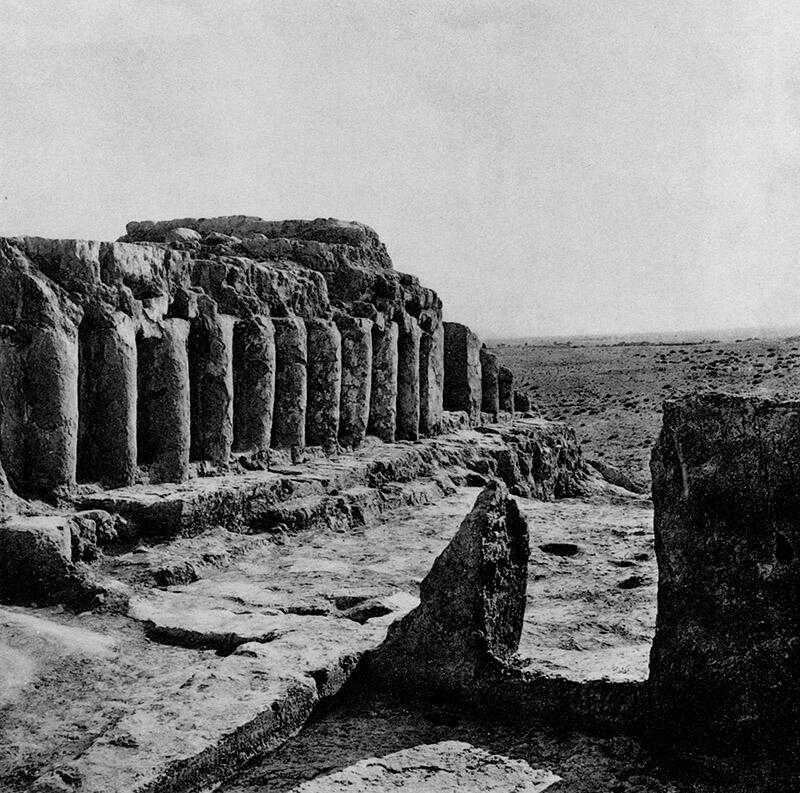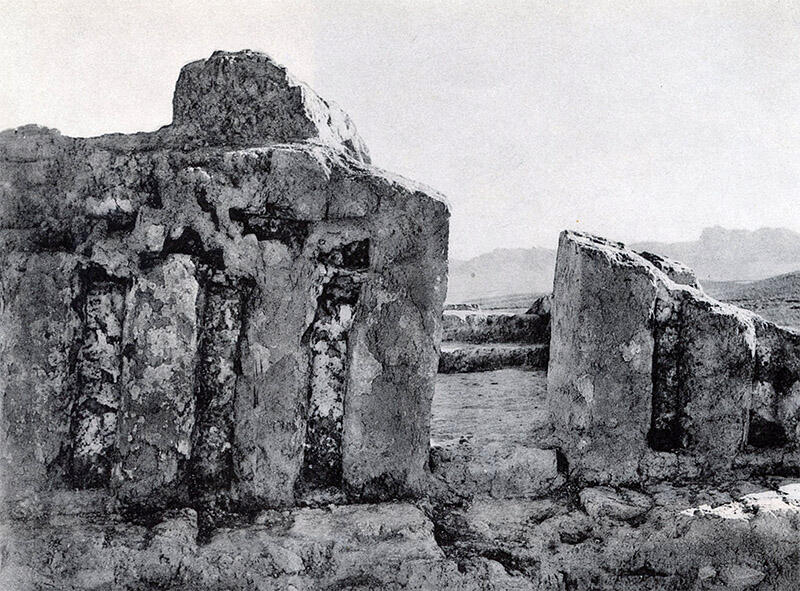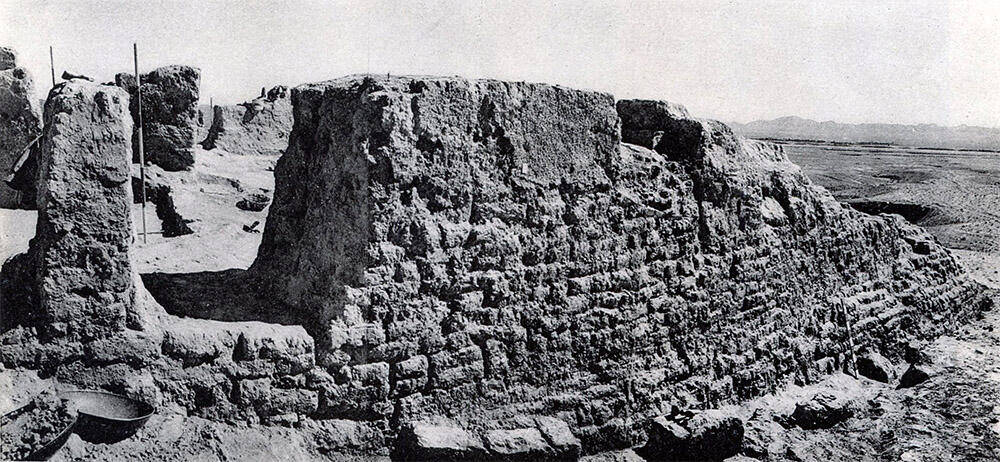A decade later, after excavating the pre-Indus site of Amri in Sindh, Jean-Marie Casal published the book La Civilisation d l'Indus et ses enigmes [The Indus Civilization and its Puzzles] (1969). In the section Mundigak becomes a small town he wrote: "At this point in its evolution, Mundigak undergoes a profound and sudden change. The beginning of Period IV [2900-2400 BCE] was marked by the breakup of the village into a city. The inhabitants abandon the already high mound of ten meters, formed by the successive reconstructions of their houses, and they rebuild their homes at its foot. The abandoned mound is then leveled to serve as a pedestal for a unique monument. Its northern facade, the only one still standing over a length of 35 meters, was adorned with engaging columns and a frieze of merlons [solid upright section of a battlement in architecture or fortifications]. This large building in which we call 'the Palace' was made of raw bricks, as was the custom already for a long time for all constructions, but special care had been devoted to it. This entire facade was covered with a white plaster many times redone, and the door frame was painted red.
"Not far from the Palace, to the east [Mound G], stood another monument enclosed in a wall plated with buttresses of triangular section, at the same time the city surrounded itself with a double enclosure reinforced outside powerful quadrangular buttresses , and flanked along its length and at the angles of rectangular bastions. Although the erosion of the soil did not make it possible to find this outer enclosure over its entire length, the city, judging by the distribution of the remains of pottery from this period, should then have the shape of a square whose each side was about a kilometer long.
"This sudden transformation of Mundigak supposes a certain number of factors which were seeded during preceding periods. First, the economic factors. These major projects imply a community rich enough to have a sufficient workforce, freed from the imperative concern of producing their daily food. The political factor is the appearance of an authority capable of imposing itself on all others and of coordinating these available forces.
"The study of the material of this period and its comparison with that of better known sites suggests that this transformation takes place appreciably during the period which in Mesopotamia is the Archaic Dynastic, that is to say in the second quarter of the third millennium BC, around 2600. If Mundigak then becomes a small town, does this change respond to what Gordon Childe called "the urban revolution"? It does not seem to. The size of the city is still very modest and does not approach that of the large cities of the Near East or that of Mohenjo-Daro. However, the economic and social level reached must have allowed full-time workers: this is undoubtedly the case for potters, it is certainly also that of coppersmiths if we judge by the many objects and weapons of copper.
"The labour force was abundant enough to erect the Palace and ramparts as well as this monument whose enclosure was rimmed with triangular projections. The large size of what remains and existence, at the foot of the main building, of a small elevated room which housed an altar and offering tables, a pottery drain intended for draining liquid, the presence in the adjacent courtyard of another oval altar where the ashes were present, all prompted us to see a temple there. The name perhaps is too pompous, but there is little doubt that this building had a religious use" (La Civilisation d l'Indus et ses enigmes [The Indus Civilization and its Puzzles] (1969) pp. 65-68).
Images
1. Mound A, Period IV, The Palace.
2. Door in the Colonnade, giving access to Passage I.
3. Large North-South Wall (all images from Jean-Marie Casal, Fouilles De Mundigak [Excavations at Mundigak], 1961).






